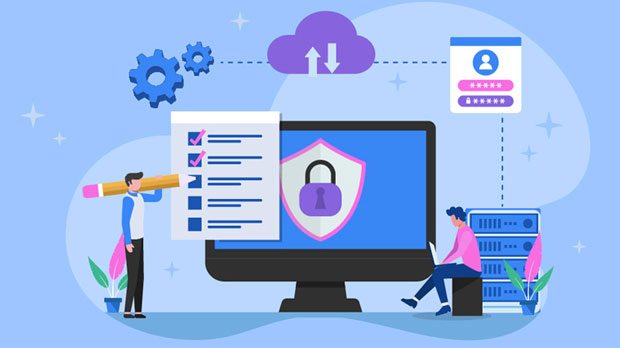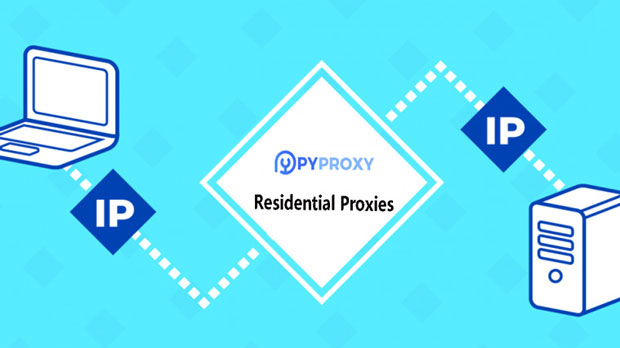When it comes to secure online communication, both PYPROXY and proxy browsers offer methods of encrypting data. However, the way these two technologies handle encryption and their overall functionality are distinct. Pyproxy uses a direct approach with proxies that are often integrated into server-side applications, ensuring data transmission is securely encrypted between the server and the client. On the other hand, proxy browsers, which are typically used as standalone tools, focus on securing the communication between the user's browser and external websites. The encryption methodologies, purposes, and user experiences are different between these two solutions. In this article, we will explore the differences in detail, focusing on the strengths and limitations of both Pyproxy and proxy browsers in encrypted transmission. 1. Overview of Pyproxy and Proxy Browser TechnologiesPyproxy is a Python-based tool that functions as a proxy server. It is primarily designed to handle requests between clients and external resources. Its strength lies in its ability to provide encrypted data transmission by establishing secure connections. Pyproxy integrates well with applications requiring high-level security for sensitive data, making it ideal for business or application-based security. Pyproxy’s setup typically involves backend configurations and Python scripts that facilitate encrypted communication.In contrast, proxy browsers, such as those integrated within VPN services or used in browser extensions, are front-end tools that provide users with a secure browsing experience. These tools route the traffic from a browser through secure servers, encrypting the data exchanged between the browser and external websites. Proxy browsers are particularly useful for individuals seeking to maintain privacy while browsing online, as they shield users' IP addresses and prevent data tracking.2. Encryption Methods Used in PyproxyThe encryption model utilized by Pyproxy is typically based on SSL/TLS protocols. These security protocols ensure that the data transmitted over the internet is encrypted between the server and the client, making it nearly impossible for malicious actors to intercept and read the data.Pyproxy, as a server-side solution, focuses on the secure encryption of communication between internal applications and external networks. Since it operates primarily through Python scripts, it provides flexibility for developers to customize the encryption process, adding layers of security like end-to-end encryption. This customization is a significant advantage for enterprises or developers requiring robust security measures for sensitive internal communication.Another notable feature of Pyproxy is its ability to support various types of proxies (HTTP, HTTPS, SOCKS5), allowing encryption to be extended to multiple protocols and ensuring versatility in securing data transmission.3. Encryption Methods Used in Proxy BrowsersProxy browsers utilize a different encryption approach compared to Pyproxy. The encryption is typically focused on securing the communication between the user’s browser and external websites. By routing web traffic through secure proxy servers, proxy browsers prevent third parties from accessing browsing data.While Pyproxy supports more complex, backend-level encryption, proxy browsers rely more heavily on SSL/TLS encryption between the browser and web servers. This ensures that the data exchanged during browsing sessions is encrypted. Many proxy browsers also use HTTPS (HyperText Transfer Protocol Secure) to maintain secure browsing environments, offering an encrypted connection to websites that support it. In cases where websites do not use HTTPS, proxy browsers may enforce their own encryption to provide added security.Although proxy browsers do not offer the same level of server-side encryption and customization that Pyproxy does, they excel at delivering encryption in a user-friendly manner without requiring any complex backend setup.4. Use Cases and Practical ApplicationsThe use cases of Pyproxy and proxy browsers differ significantly due to their unique approaches to encryption. Pyproxy is well-suited for developers, enterprises, and backend systems that require secure, customizable encrypted transmission for internal and external communications. It can be deployed in web applications that process sensitive information or in environments where high-level security protocols need to be integrated.In comparison, proxy browsers are primarily aimed at end-users who want to protect their privacy while browsing the internet. They are particularly valuable in scenarios where individuals want to mask their IP address, access geo-blocked content, or safeguard against cyber threats such as man-in-the-middle attacks. For personal use, proxy browsers are more straightforward to implement, requiring minimal configuration, making them an excellent choice for regular users seeking enhanced privacy and security online.5. Security Features and LimitationsBoth Pyproxy and proxy browsers offer strong encryption capabilities, but they come with distinct limitations depending on their context.Pyproxy’s major strength lies in its customizable nature, which enables organizations to implement robust security features. However, the complexity of setting up Pyproxy, along with the technical expertise required to configure it, may be a drawback for users who are not developers or system administrators. Additionally, while Pyproxy encrypts data between the server and client, it does not inherently address the encryption of end-user web browsing.On the other hand, proxy browsers are highly user-friendly and simple to deploy. However, they do have some limitations in terms of the range of encryption. For instance, they are only able to secure the communication between the user's browser and external websites, meaning the internal network or server-side encryption is outside their scope. Moreover, proxy browsers may not be able to fully prevent sophisticated cyber-attacks or protect against all forms of data tracking, especially if the websites themselves have weak security protocols.6. Performance and Speed ConsiderationsAnother key difference between Pyproxy and proxy browsers lies in their performance and speed. Pyproxy, being a server-side solution, can sometimes introduce latency due to the need for establishing encrypted connections between the client and the server. However, because it is often implemented in enterprise-level applications, the trade-off in speed is usually acceptable when compared to the high level of security it provides.Proxy browsers, while easy to use, can also suffer from speed reductions. The process of routing traffic through secure servers can lead to slower browsing speeds, especially if the proxy server is located far from the user’s geographic location. Additionally, some proxy browsers may use shared servers, leading to potential congestion and slower speeds.7. Conclusion: Which Solution Is Right for You?Both Pyproxy and proxy browsers have their distinct advantages and are suitable for different scenarios. Pyproxy is ideal for backend systems requiring custom, encrypted communication and security measures, while proxy browsers provide an accessible solution for individuals looking to protect their privacy during internet browsing.Choosing the right solution depends on your specific needs: if you need enterprise-level security for internal applications, Pyproxy is the better choice. However, if you are an individual seeking a simple, efficient way to secure your browsing activity, a proxy browser will provide the necessary encryption with ease. By understanding the differences in their encryption models, you can select the most suitable tool for your specific encryption requirements.
Aug 13, 2025





















































